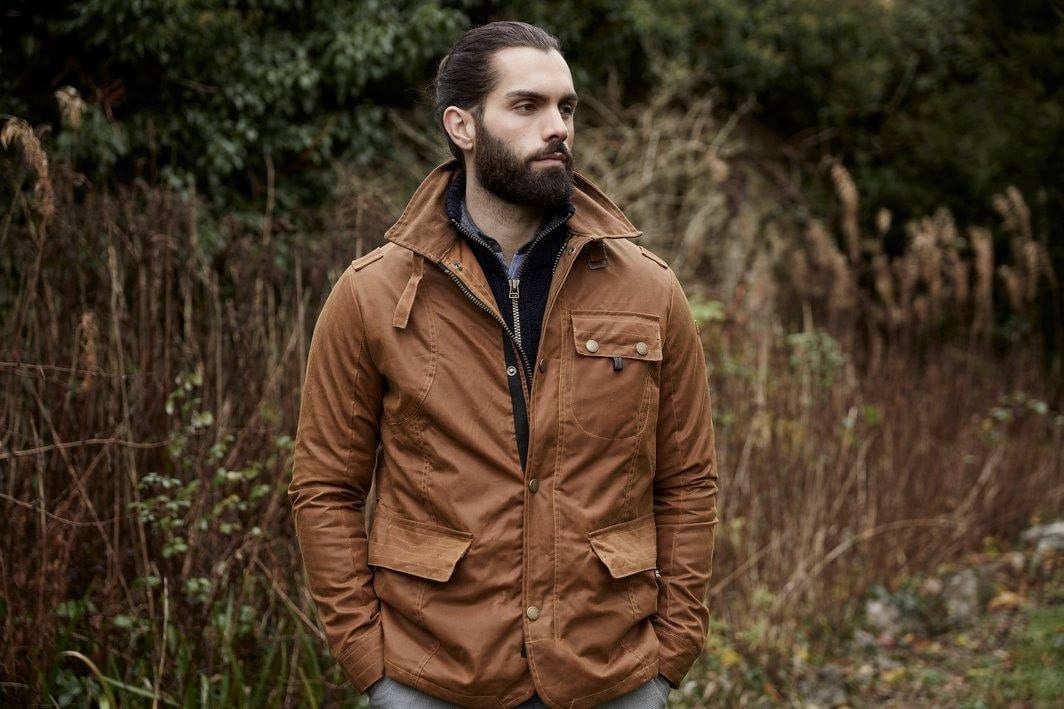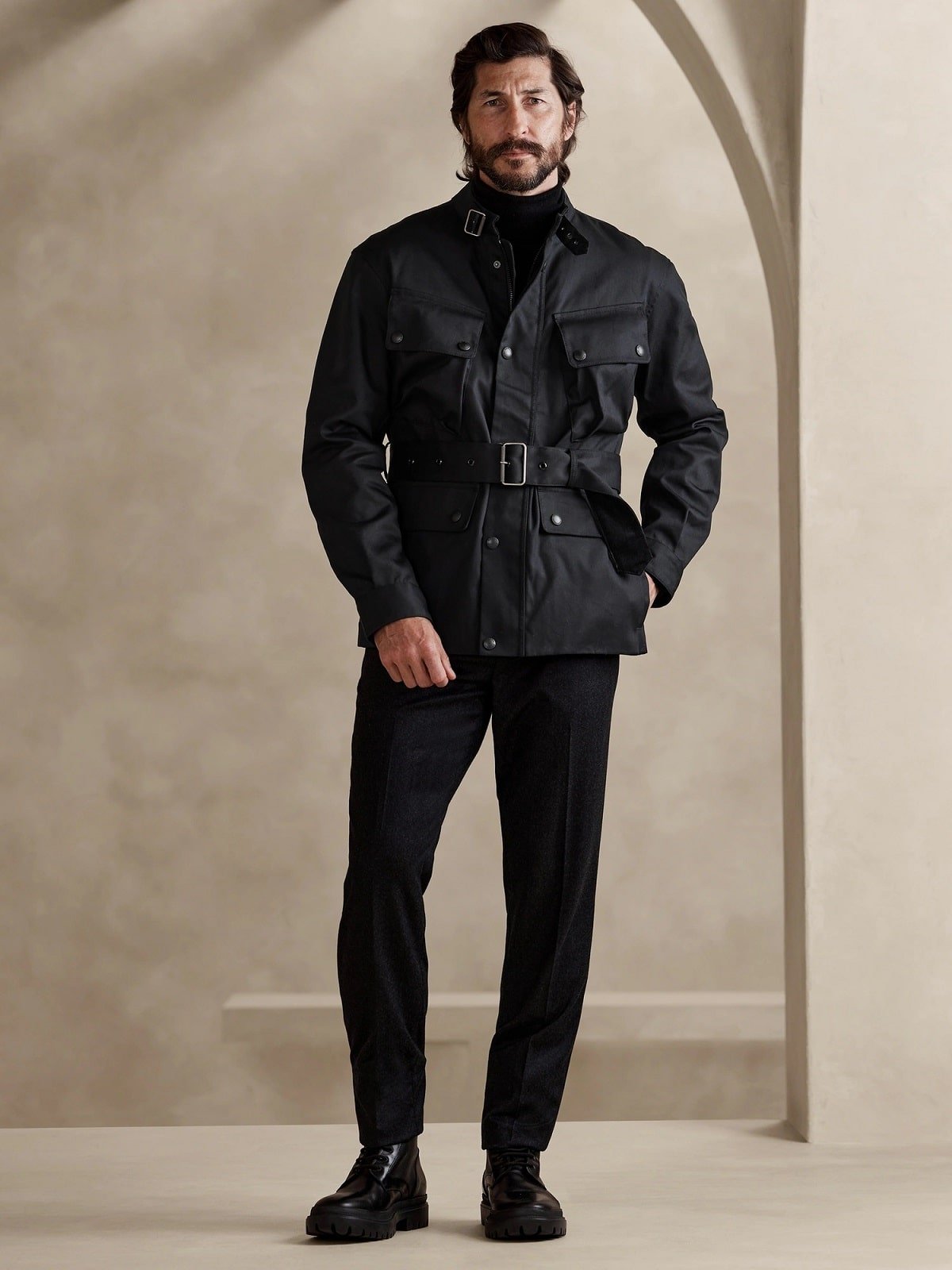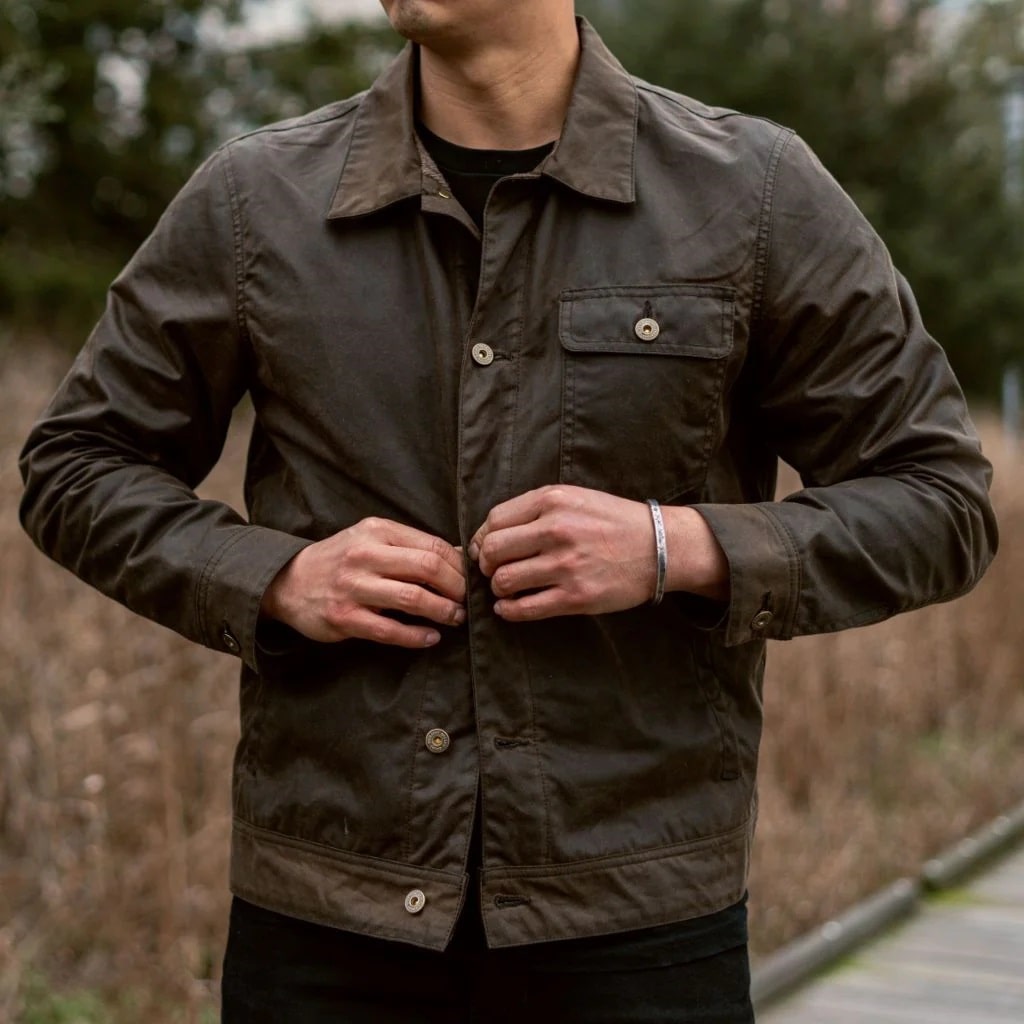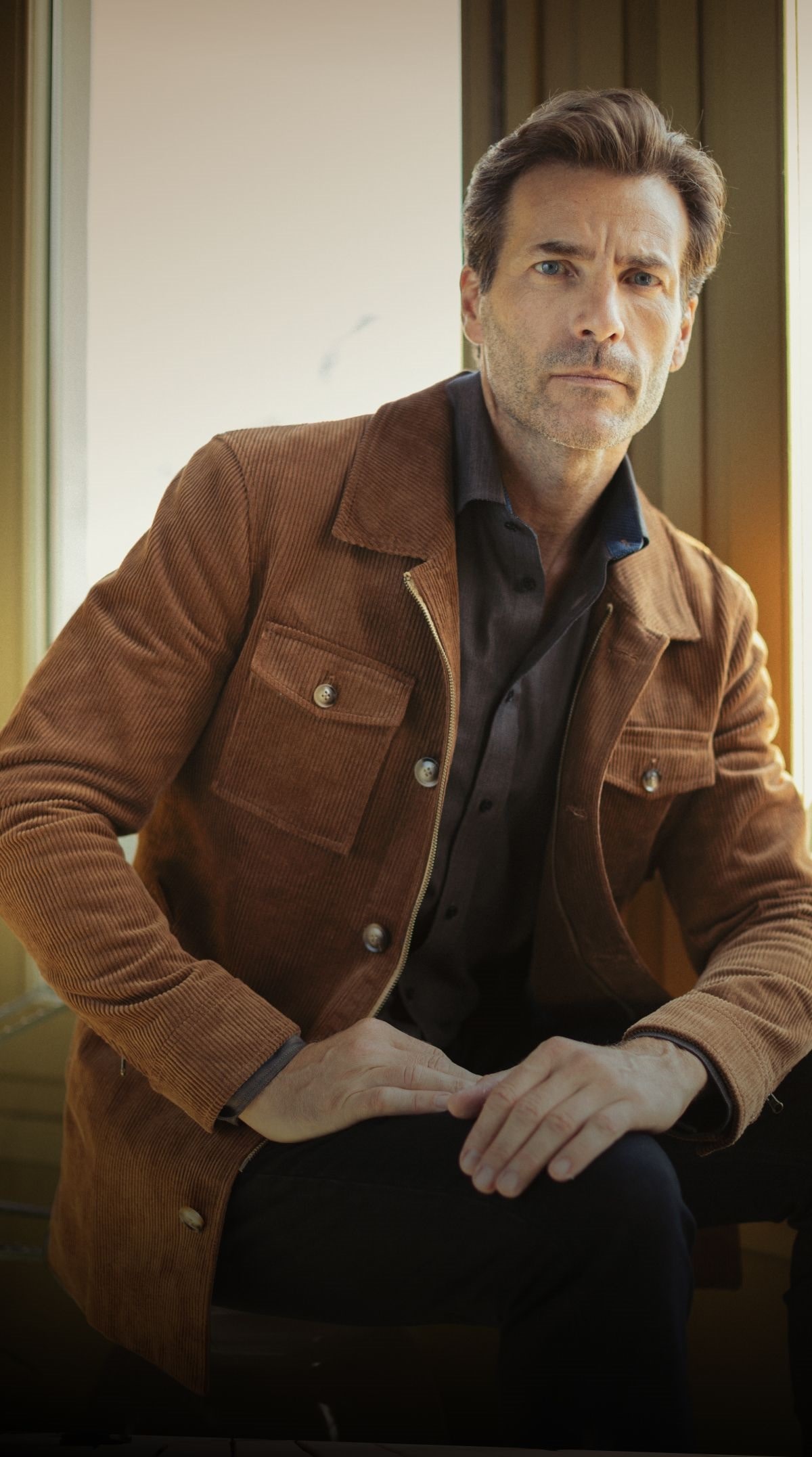1
HOME > Tips & Advice >
WHAT’S A FIELD JACKET AND HOW DO YOU WEAR ONE?
Written by Ivan Yaskey in Tips & Advice on the 18th September 2023

Even if you don’t know it by name, you certainly recognize the field jacket – olive green, boxy yet draped, and featuring slip or patch pockets on the chest and by the waist. The design embodies utilitarian style and the transition of military practicality to everyday convenience. Field jackets entered the menswear lexicon following the Vietnam War – part easily accessible military surplus garment and a counterculture symbol of protest – and never fully left. Through this pathway, it’s been elevated – for example, via wool or cashmere construction – and been shortened, lengthened, and lightened for the outdoors without losing sight of its rugged, durable origins. As designers continue to revisit this silhouette, learn more about its origins, modern variations, and how to style it:
The Origins of the Field Jacket
Both American and British Armies introduced a field jacket-type garment during the 20th century. Its origins either get attributed to the M-65, introduced by the U.S. Army in the 1960s for troops heading off to Vietnam; the M-43, a heavily pocketed olive drab jacket launched during World War II; or a khaki-colored jacket with pockets to carry additional ammunition that members of the British Army wore during the Boer War and received wider adoption during World War II.

Of these versions, an inkling of its present iteration emerged during World War II. Worn by American soldiers, the M-43 was a medium-weight cotton jacket in olive drab featuring expandable pockets for holding ammunition and other supplies, eliminating the need to carry a separate bag. The M-43 reflected innovation in a few other regards. Introduced by the Office of the Quartermaster General in 1943 and officially launched the next year, the M-43 set the stage for military apparel based on layering, allowing soldiers to dress for and adapt to the weather and climate ahead. As with other military garments, the M-43 evolved over the next couple of decades. In the 1950s, the U.S. Army started adding zippers and snaps for a more secure fit and streamlined wear. The pointed revere collar was also cast aside for a stand collar housing a concealed hood the wearer could pull out for shade or better coverage against precipitation.
The M-65 build upon this foundation, adding a straight, boxy body and utilizing water-repellent fabric to keep the wearer dry. Pockets additionally included snap closures for better security, Velcro on the sleeves and collar, a drawstring waist, and epaulettes on the shoulders. These features better suited the tropical, rainy jungle conditions American troops encountered in Vietnam and missions into the 2000s. Strictly in terms of tactical construction, the U.S. Military integrated the jacket’s water-repellent construction and multi-pocket form into the Battle Dress Uniform (BDU) introduced in the 1980s and used until 2005, when the Army Combat Uniform replaced it with another modular system. During these decades, heavier cotton transitioned to an equally durable yet lighter-weight cotton-nylon blend or cotton drill. The extra pockets, water-repellent material, and looser-fitting, lightweight, and adaptable design transitioned the field jacket to civilian wear starting in the 1970s, positioning it as a transitional garment for damp conditions. At the same time, soldiers and civilians protesting the United States’ presence in Vietnam continued to wear the jacket, turning it into a two-sided symbol of peace and unrest.

A Modern Interpretation
Today’s inspiration for and vision surrounding the field jacket inevitably involves pop culture: Coinciding with its civilian adoption was Robert De Niro in Taxi Driver, Sylvester Stallone in Rambo, and Al Pacino in Serpico, all of whom sported the olive drab garment on screens. While the 1970s and early ‘80s surrounded the field jacket with a rebellious mystique, its modern interpretation rests on the appeal of cargo trousers: practical, utilitarian, and no frills, with the color and boxy form alluding to older military apparel construction. This varies from the similarly pocketed safari jacket – itself evoking adventures with hinted colonialist underpinnings and a belted waist that essentially makes it a shorter trench with extra pockets. Yves Saint Laurent introduced a runway version back in the ‘60s, and the jacket has yet to shed this gussied, elevated interpretation. Instead, the straight, angular form and typically default olive green reflect a straightforward version of masculinity: There’s nothing over the top, and you’re wearing something that expands upon your pockets while offering a looser, more relaxed form.
As far as styling is concerned, traditions are designed to be stretched out, distorted, and reimagined. Through this lens, the field jacket tends to hit at the hips or thighs and often includes four flap pockets on the front – plus two hidden side pockets for your hands. You might spot a zippered front or even a pocket, and the epaulets remain for a more commanding presence. On the other hand, the features that have inspired countless types of outdoor gear haven’t been upgraded for the backpacking crowd. You’re not going to find some technical water-repellent, ultra-light nylon in an Arc’Teryx vein. Rather, cotton or a heavier nylon continues to lay down the foundation, perhaps with some water and wind repellency. These aspects, plus the stuff pocket and hood, make it a go-to for the everyday carry (EDC) set still coming around to cross-body bags. Beyond this, the olive green sometimes gets tossed out. Replacing the clearer military allusion are navy, tan, or gray, ultimately edging the field jacket toward a longer chore coat, a waxed cotton windbreaker à la Barbour, or a more masculine, unbelted safari jacket.

Wearing the Field Jacket
If you’ve yet to experiment with a field jacket, whether new or military surplus:
- Take inspiration from the military: In line with more modular military dressing, the field jacket delivers more body than a windbreaker in cooler weather and has the space to fit over a denim jacket, hoodie, or bomber for more coverage.
- Casual: Unless you’re willing to go in the safari direction, treat the field jacket as a casual garment – one ripe for a pairing with jeans or chinos and a T-shirt, chambray shirt, or lightweight knit.
- Know how it should fit: Look for a fit that’s wider cut than a blazer but not to the point it falls off or bags around your frame. Make sure you have enough room for layers underneath.
- Avoid an all-over military look: Cut out the camouflage, especially if you’re intending to wear an olive green field jacket. Instead, you can take one of two strategies: Avoid references entirely by wearing a tan, navy, or gray shade. Or, if you like the traditional look, keep the rest of your style neutral – whites, grays, tans, and denim. Take this a step further by throwing in a pattern through an accessory.
- Watch what you store: Just like wearing cargo trousers, avoid overstuffing your pockets. Instead, realize that no matter their shape or configuration, they offer enough space for your wallet, phone, keys, and a passport.

Trending
2
3
4
5
6
7
8
9
10










